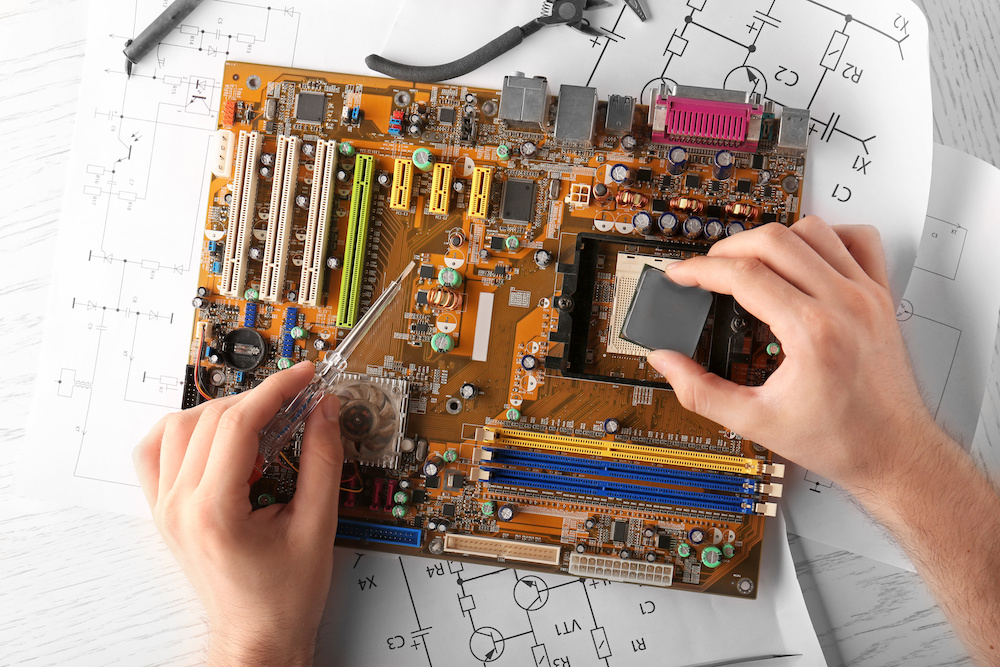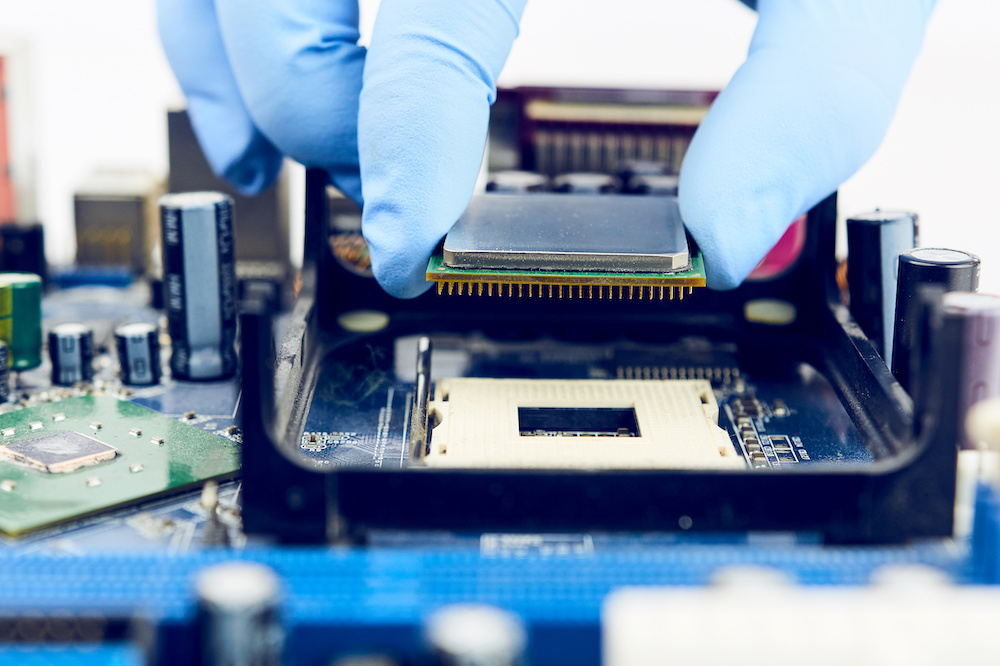Does My Motherboard Support NVMe: A Helpful Guide
We may earn a commission for purchases using our links. As an Amazon Associate, we earn from qualifying purchases.
The hard disk drive or HDD has had a firm grip on the storage space market for many years.
However, the solid-state drive or SSD is now giving the spinning platters a run for their money.
SSDs come with a small form factor but deliver blazing fast speeds.
They are changing the landscape for digital storage, especially with the emergence of NVMe.
If you are asking the question, "Does my motherboard support NVMe?", you are not alone.
Many PC builders and gamers are looking to experience a higher bandwidth than the traditional SATA interface.
We have gathered some pieces of relevant information to make things easier for you.
ALSO READ: How Long Do Motherboards Last?
HDD vs. SSD
Before we go deeper into NVMe compatibility, it is important to understand the difference between HDD and SSD.
The HDD
HDD is the traditional non-volatile storage option, which means that the information is kept even if you turn your computer off.
It consists of spinning platters with a magnetic coating where data is stored or retrieved.
These platters are paired with a readwrite head, which is controlled by an actuator arm.
The head moves to different sectors of the platter, depending on where the data to be transferred is.
Data transfer is done in a random-access manner, which simply means that information can be stored or retrieved in any order.
Most HDDs today come in the form of small rectangular boxes.
The SSD
The SSD works under the same basic principle as the HDD in that it serves as non-volatile storage for information.
However, it stores data in interconnected flash-memory chips known as NAND instead of in platters.
These chips are not the same as the ones you see in USB thumb drives. They are faster and more reliable.
SSDs have higher data transfer rates, lower latency and access times, and higher storage density.
With its diminutive size, the SSD gives manufacturers more flexibility when it comes to design.
It can take the place of hard drive bays, be plugged into a PCI Express expansion slot, or be mounted on a motherboard.
Understandably, SSDs are more expensive than HDDs, but the disparity in prices is steadily shrinking.
As a result, it is slowly replacing HDDs in applications where speed, high capacity, durability, and power consumption are essential.
What Is NVMe?
NVMe is one of three storage interfaces available today.
The other two are SATA and SAS.
SATA
SATA, short for Serial Advanced Technology Attachment, is the oldest and most affordable among the three interfaces.
It delivers data in a serial manner, moving one bit at a time between the drive and its host.
The information is transferred through a high-speed serial cable with seven conductors.
Out of the seven conductors, three are grounds, while the other four are active data lines arranged in two pairs.
This technology was groundbreaking back in the '90s, especially when compared to the ATA interfaces, which used parallel data streams.
To this day, most laptops that you see in the market still use SATA, although there are now better options available.
SAS
When the SSD came out, SATA evolved naturally into the SAS or Serial Attached SCSI.
The point-to-point serial protocol of SAS is its biggest draw, which means that the controller is linked directly to the drive.
It has thinner and longer cables, allowing it to connect to 128 different devices.
What is more, it can support high-speed read and write tasks simultaneously with its full-duplex capabilities.
SAS is more expensive than SATA but is cost-effective when used in data centers or creative workstations.
It is good to have on your computer if you do video editing, animation, and other types of processing-intensive tasks.

NVMe
NVMe stands for Non-Volatile Memory Express.
It is a data transfer protocol designed for SSD memory.
Industry experts see it as the next big thing when it comes to storage interface technology, and rightly so.
It addresses the long-standing problem of server manufacturers, where high bandwidth could not be maximized because previous interfaces were designed for HDDs only.
The slow storage interface created a bottleneck, putting to waste the speed of the CPU.
With NVMe, you can take advantage of the latest and future advancements in data storage and transfer.
It is true that, for now, SATA remains the industry standard for data storage.
It can provide a large storage capacity, and it comes at a lower price.
That said, as NVMe technology continues to evolve, it will become more accessible and affordable.
It won’t be long before NVMe unseats SATA as the go-to storage interface.
Is NVMe Better Than SATA?
NVMe was designed for the latest PCIe-based SSDs.
This means that it can accept more commands, all at the same time, compared to SATA-based hard drives or SSDs.
In addition, NVMe offers lower latency, making the drives faster and more responsive.
However, higher-capacity NVMe drives still come at a prohibitive price, so you can’t dump SATA just yet when building your PC.
Also, SSDs hold many advantages over HDDs, and there is no question that they will dominate the market eventually.
But this will not yet happen in the near future.
For now, there are ways to enhance your PC’s performance.
You can use an M.2 NVMe as main storage and boot drive and a cheaper hard drive as secondary storage.
This is called a dual-drive system.
The SSD is used for operating systems and apps, while the larger spinning drive stores the files.
A 256 GB SSD will do well for general use, but 128 GB is also workable.
Do All Motherboards Support NVMe?
Although NVMe technology has been around for several years, it is still relatively new.
Consequently, there are still motherboards available in the market today that are not compatible with it.
The problem is that determining NVMe compatibility for your motherboard is not as simple as reading the product label.
Still, it is perfectly doable if you follow the tips below.
Does My Motherboard Support NVMe?
Below are a few simple tricks that can help you determine whether your motherboard supports NVMe or not.
The M.2 Slot
The first thing you need to find out is if the motherboard has an M.2 slot.
Traditional SATA drives are compatible with both M.2 slots and 2.5-inch form factors.
On the other hand, NVMe will only work if the motherboard has an M.2 slot.
The M.2 platform supports many applications, including the SSD implementation of both SATA and NVMe drives.
It also supports WiFi and Bluetooth cards.
It is an important feature to have, and you should have no trouble finding a motherboard that has one.
That said, just because a motherboard has an M.2 slot doesn’t always mean that it is NVMe compatible.
Earlier M.2 slots were designed to support SATA only.
To ensure that the M.2 slot on your motherboard accepts NVMe, you should check the general guide in its manual.
Also, take note that some manuals might refer to it as “PCIe mode” instead of NVMe.
The Keys
The next thing you need to look at is the key layout on the motherboard’s M.2 slot and the NVMe SSD.
If they do not match, you won’t be able to plug the connector into the socket.
The good thing is that this is quite easy to determine.
If six contacts on the slot are separated from the rest, it is B-keyed.
If only five contacts are separated and are located on the opposite side, then it is M-keyed.
Card Length
NVMe SSDs usually come in two sizes: 42 mm and 82 mm.
Newer motherboards, though, have M.2 slots compatible with four different sizes, so this should not be a problem.
Still, it is best to check this information in the motherboard’s manual and the SSD product page.
Operating Systems
Aside from checking the hardware, you should make sure that the OS is compatible.
All the latest versions of Windows, Linux, Mac OS, and Chrome OS accept NVMe.
However, Apple does not allow upgrades in many of its latest models.
What Can You Do If Your Motherboard Does Not Support NVMe?
Now you know how to check if your motherboard supports NVMe.
What if you find out that it doesn’t?
Don’t worry, as there is still something that you can do so you can enjoy NVMe’s faster speeds.
Use a PCIe Adaptor
If your motherboard does not have an M.2 slot, you can go online and look for a PCIe M.2 adaptor.
It is easy to find and relatively cheap, but make sure that it can use the PCIe x4 slot on your motherboard.
This will allow you to use NVMe without experiencing any hit in performance.
RELATED: Does Motherboard Matter for Gaming? (Guide)
Conclusion
At first glance, it might seem difficult to answer the question, does my motherboard support NVMe?
Fortunately, with a few basic tricks, you can easily determine this on your own.
If your motherboard is no more than four or five years old, there is a good chance that it supports NVMe.
Still, ensuring that it is compatible will help you avoid throwing your money away on parts that do not go together.

